BIOENGINEERING | CHEMICALS | EDUCATION ENERGY | INNOVATION | LEADERSHIP | SAFETY
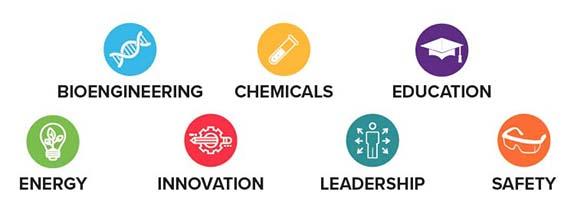
AIChE and the Young Professionals Committee (YPC), with support from the AIChE Foundation, are recognizing these 35 outstanding young professional AIChE members with the AIChE 35 Under 35 Award because they have made significant contributions to the Institute and to the chemical engineering profession.
The award was created to acknowledge the successes of some of AIChE’s youngest members, all under the age of 35, and to promote the achievements of this generation of chemical engineers who are changing the face of the profession. The winners exemplify the best our profession has to offer and represent the full breadth of early ChE career paths. Each award winner was selected for their achievements in one of seven categories: bioengineering, chemicals, education, energy, innovation, leadership, and safety.
In addition to this feature, the awardees will be highlighted on the ChEnected blog and on AIChE’s social media outlets with the hashtag #AIChE35Under35. An awards reception at the 2017 AIChE Annual Meeting in Minneapolis, MN (Oct. 29–Nov. 3, 2017) will also celebrate the winners.

Clinical Assistant Professor

Imagine being thrown into teaching a senior design course two weeks into the semester with no course materials or prior experience teaching the course — and on top of that, your school’s accreditation is being evaluated. This is the seemingly insurmountable challenge Bilgin was faced with during her first year of teaching at UIC. She not only overcame this challenge, but earned praise from the accreditation program evaluator for her dedication, effectiveness, and enthusiasm.
Despite her obvious resourcefulness and adaptability, there is never enough time for Bilgin to meet the high standards she sets for herself. She explains, “There is always a lot more that I really want to do and bring to my classroom. … I wish I had more time to learn about effective teaching techniques and tools.”
Bilgin is working to develop the next generation of chemical engineering students. She combines art and science in demonstrations for grade-school students to teach children about the profession in a fun and engaging environment. Although students of all ages have learned much from her, Bilgin says, “learning from them is a wonderful gift.”
FUN FACT >> Bilgin’s favorite book is How to Talk so Kids will Listen and Listen so Kids will Talk.

Christina Borgese, 34
Cofounder and Director of Engineering and Development
PreProcess, Inc.

“It’s your system; you press the button,” said Borgese’s mentor during startup of the first system she designed and built. She was later on the other end, giving this directive to her mentee, having the opportunity to see “the mix of joy, excitement, and a bit of apprehension,” she reflects. To live this excitement every day, Borgese cofounded PreProcess in 2010 to build and scale first-of-a-kind ideas to commercial reality. As director of engineering and development, she likens her role to “composing and then conducting a symphony.” She develops and scales innovations in a variety of industries, where she applies chemical engineering unit operations to nontraditional applications.
Her passion for building organizations and processes from the ground up was sparked in college in a technology management program, and she found her interest in scaleup after establishing a system and team to verify that a new form of solid particle could be produced at scale. Prior to starting her own company, Borgese worked at a biofuels startup, where she helped to scale the world’s first commercial-scale supercritical biodiesel reactor. “We took it from a lab, to pilot, to commercial scale in 14 months, and although we worked six and seven days a week to make it happen, I was energized by the work,” she says.

Borgese’s startup mentality is even evident in her service. She was integral to restarting an AIChE student chapter at her alma mater, the Univ. of California, Santa Barbara, leading and growing the group as chapter president. She regularly returns to campus to volunteer, coaching students in professional development and sharing her industry experiences. She also founded the AIChE Center for Innovation and Entrepreneuring Excellence (CIEE), and she serves on the Advisory Board at Cal Baptist Univ., which graduated its first class of chemical engineers in May 2016.
FUN FACT >> The last thing Borgese bought online was car parts to make a couple repairs.

Donna Bryant, P.E., 27
Environmental Operations Unit Superintendent
Syngenta

Youth hasn’t stunted Bryant’s career trajectory. As the youngest superintendent Syngenta’s St. Gabriel Plant has ever had, she leads a 26-person unit that treats the wastewater streams for the entire plant and removes the remaining waste from the site. She cites a research role, internships, and a rotational program for helping her to find an application of her interests in biological sciences, problem-solving, math, and improving the world.
Working with and managing a group of employees challenges and benefits Bryant. “Managing people consistently but in different ways based on their personalities” can be difficult, she explains, but “being able to work hands-on with my employees to make the unit run safely and efficiently” is what she enjoys most about her job.
FUN FACT >> If Bryant wasn’t a ChE, she’d be a doctor by day and a farmer by night.

Beth Carter, P.E., 31
Lead Development Specialist
Honeywell UOP

Carter likens her career to her undergraduate senior design course, but instead of being simply conceptual, “the exciting thing is that processes that I help develop actually get built by customers!” she explains. As a lead development specialist in the refining development group at Honeywell UOP, she designs novel processes, equipment, and catalyst technology solutions for petroleum refineries.
It was her experience working with “some of the best engineers and scientists in the world … solving hard energy technology problems” as an intern at Honeywell that swayed her toward chemical engineering. She credits her time in field services, where she oversaw unit startups, turnarounds, and catalyst loadings, with forcing her “to become a problem-solving engineer who has seen process technology working (and not working!).” She is proud of the impact she has already made on energy technology development, but hopes to leave a larger mark by inventing and developing clean, reliable, affordable, and sustainable energy solutions.
FUN FACT >> Carter gets up every day at 4:45 AM to run.

Eun Ji Chung, PhD, 33
Gabilan Assistant Professor
University of Southern California (USC)

Chung keeps her personal and professional goals in focus. As an undergrad, she explains, “I wanted to pursue a field that could help human health and patients.” Now she is doing just that as an assistant professor in the Dept. of Biomedical Engineering at USC, where her research group investigates molecular design, nanomedicine, and tissue engineering to generate biomaterial strategies for clinical applications.
Juggling an academic career and family life while pursuing lofty targets is undoubtedly challenging, and Chung admits that she is constantly pushing herself to perfect the balance. At the end of each year, she writes out her career and family goals for the upcoming year, as well as any additional personal goals, and sets a timeline for achieving them. Her drive and holistic outlook should help her to achieve her next goal — to provide “cost-efficient nanodiagnostics and therapeutics for patients with diseases that are not well-understood or are often overlooked.”
FUN FACT >> The apps Chung uses most are Yelp and Apple Podcasts.

Lane Daley, 28
Project Engineer
Clif Bar and Co.

Few chemical engineers can or would say that the hardest part of their job is not eating the product. It is more understandable, however, coming from Daley — a project engineer at Clif Bar. Leaving the chemical industry wasn’t an easy decision for her, but it has allowed her to pursue her passion for the outdoors. She explains, “Clif Bar allows me to fuel outdoor adventures for myself and others.” She believes in finding a company and company culture “that resonates with you … because we spend too much time at work to not 100% enjoy it.”

Whether in her outdoor pursuits or her career, a sense of adventure pervades everything Daley does. She took on a challenge at a manufacturing site in Estonia, despite not knowing the people, the language, or the process. She and her team were able to finish a project with a large scope of work in a short period of time, all while working within those constraints. As a founding member of the Tri-Cities Tennessee Professional Chapter of Engineers without Borders, Daley traveled to Samne, Peru, to assess the water needs of the community.
FUN FACT >> The last thing Daley bought online was mountain biking shoes.

Cole A. DeForest, PhD, 33
Assistant Professor
University of Washington
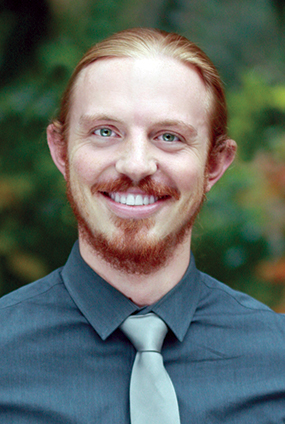
With a lengthy list of accomplishments and awards to his name, DeForest is an achiever who regularly sets his sights on the highest peaks and surmounts them. An assistant professor in the Dept. of Chemical Engineering at the Univ. of Washington, he teaches classes on reactor design, polymer chemistry, and biological frameworks, and he manages a research group that develops novel biomaterial-based strategies for human health applications.
The biological side of chemical engineering interested DeForest even before he’d taken his first chemical engineering course. A summer undergraduate research position working in tissue engineering and biomaterial design stoked his enthusiasm for the topic. In his current position, he plans to push the boundaries of biomaterials research, successfully engineering functional, multicellular, complex tissues for transplantation.

DeForest’s research may be intellectually demanding, but it is saying goodbye to students that he finds hardest. He describes working with students and developing them “into the next generation of independent scientists” as the best part of his job. The attention he balances between his students and research earned him the highest recognition for teaching excellence at the Univ. of Washington in 2016, the Presidential Distinguished Teaching Award. He is an example of successful work-life balance, finding time for many professional successes as well as time “to live life to the fullest with my family and friends.”
FUN FACT >> DeForest has run or biked to and from work nearly every day for the past 15 years.

Ben Freireich, PhD, 33
Technical Director
Particulate Solids Research, Inc. (PSRI)

It is probably safe to conclude you were born to be an engineer if you, like Freireich, have “used a system of differential equations to determine how many pizzas to order.” The technical director at Particulate Solids Research, Inc. (PSRI), Freireich has an enthusiasm for science, engineering, and learning that brings to mind Bill Nye’s character on his namesake science program.
With a background in mechanical engineering, Freireich found his way to chemical engineering through his specialization in particulate mechanics. In his current role, he is responsible for guiding all of the research programs at PSRI, which focus on the application of particle technology fundamentals with a specific focus on fluidized systems.
Freireich describes the satisfaction of seeing his work verified in real-world operations: “There is not a single more satisfying feeling than when the model fits the data.” In one such scenario, he had to exercise his engineering judgment to quickly develop a process model for an extreme and difficult-to-measure process, and found plant performance to be within 10% of the model predictions.

For someone who has found much academic and professional success, it may be surprising to learn that Freireich struggled to read, finding out in high school that he was reading at an elementary-school level. Although he was discouraged from applying to a competitive engineering program, his convictions and lots of reading helped him to overcome this obstacle.
FUN FACT >> Freireich communicates best through pictures, and he keeps at least two colored pens on him at all times.

Bala “Chaitanya” Gottimukkala, P.E., 34
Senior Risk Engineer
RISKbytes, Inc.

Looking down at his wet shirt, stained black, Gottimukkala’s future in process safety was destined. His shirt was wet from the rain, but the black stains were from an explosion started by a liquefied petroleum gas (LPG) leak at a refinery in his hometown in India that killed 20. This incident piqued his interest in chemistry, refineries, and accidents.
As a senior risk engineer at RISKbytes, Gottimukkala identifies hazards and provides strategic risk-based decision-making advice for onshore and off shore projects. He applies his knowledge of science and engineering to assess the consequences of major hazards, as well as to develop plans and processes to ensure adequate mitigative measures are taken. He has a toolbox of safety skills, but it is his mentor’s mantra that he keeps at the forefront of his mind: “The plant operator’s safe return home should be the highest priority during the design, construction, and operation of a plant.”
FUN FACT >> Gottimukkala recommends the book Tools of the Titans.

Rajamani Gounder, PhD, 32
Larry and Virginia Faith Assistant Professor
Purdue University
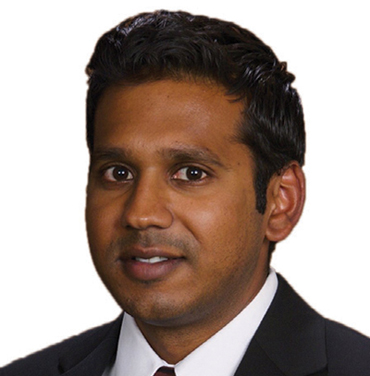
Learning that chemical engineering “was among the most demanding undergraduate majors” was a reason for Gounder to pursue the degree, not shy away from it. An undergraduate research project sparked his interest in catalysis and academia, and positioned him to become an assistant professor of chemical engineering at Purdue Univ., where, he says, “I now spend most of every day thinking about catalysis.”
The goal of all that thought and research is to “enable catalysis to become a more quantitative and predictive science,” he says. A busy schedule makes it difficult for Gounder to protect his time for uninterrupted thinking and scholarly output. However, he enjoys the time he spends “working with and learning from talented, energetic, and creative students.”
FUN FACT >> Gounder likes to snack on sushi.

David W. Holt, 33
Associate Attorney
Bradley
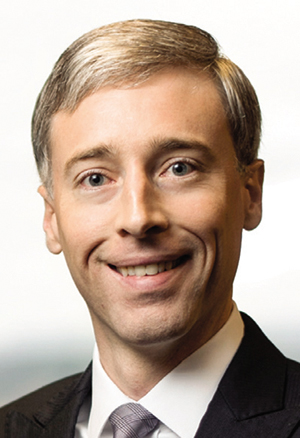
As an associate attorney working on a variety of intellectual property and commercial litigation matters, Holt espouses having a background in chemical engineering. “My background as a chemical engineer makes me uniquely qualified to handle matters ranging from advising on patent strategies to product liability litigation,” he says. He also explains that his education taught him to analyze and work through problems, a skill he applies daily.
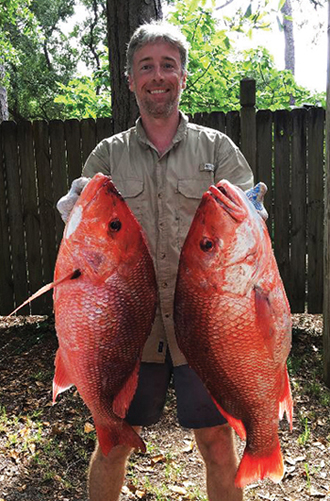
Holt’s education prepared him to solve tough problems but didn’t necessarily prepare him to handle the challenge of managing clients. He explains, “In many cases, lawsuits become personal to the parties involved. … It is difficult for people not to become emotionally invested. … The legal process can be long, it can be invasive, and it is certainly taxing.” Holt is committed to guiding his clients through these difficult legal issues to provide them “with counsel and advice that they can rely on to successfully manage all aspects of their business.” He also plans to continue to serve his community by providing pro bono legal representation.
FUN FACT >> The first concert Holt attended was Alabama.

Owen P. Jappen, 25
Senior Process Engineer
Evonik
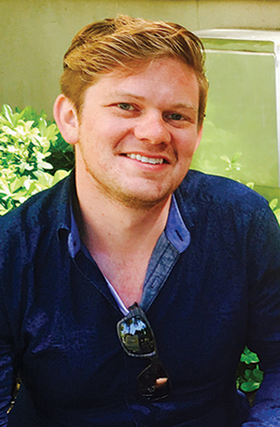
A senior process engineer at Evonik focusing on process optimization as well as new process development for superabsorbent polymers, Jappen highlights sustainability and responsible energy consumption as important aspects of his job. On behalf of Evonik, he recently entered a competition in Germany for sustainability projects. He feels chemical engineers have a responsibility to offer their expertise to the public to help solve global issues. He hopes “to continue to volunteer and work for organizations that promote this effort and support cementing this value as a pillar of our community.”
Jappen credits his chemical engineering degrees with equipping him to solve any problem, even those of a large extracurricular organization he leads. He implemented Gantt charts and other engineering project management tools to help make his group’s activities more efficient.
FUN FACT >> Jappen can remember Saturday Night Live skits word for word.
Ellen Kloppenborg, P.E., 30
Lead Development Specialist
Honeywell UOP
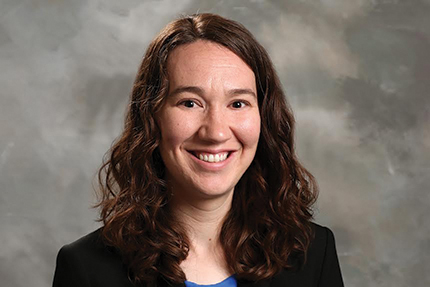
Kloppenborg is a lead development specialist at Honeywell UOP, where she develops preliminary process design concepts and material balances based on yield and performance estimates for new technologies. She evaluates and optimizes processes using process simulation software and performs techno-economic analyses.
Working on brand-new processes and designs comes with its obstacles. Kloppenborg explains, “The most challenging part of my job is figuring out how to do things in which I have little prior experience. It’s fun to learn new things, but does require more effort and good resources.” Kloppenborg luckily has access to many good resources in her colleagues. “They’re a highly intelligent and skilled group of people who can work together to solve interesting and challenging problems. At the same time, they also take the time to teach others and share knowledge. I’ve learned so much from working with them,” she says.
Kloppenborg is also working to help others through her participation on Honeywell’s Educational Outreach committee, where she has helped to coordinate various activities and challenges. She is active in AIChE’s Chicago local section and has organized the High School Outreach program for the Midwest Regional Conference for the past three years.
FUN FACT >> Kloppenborg loves to try new recipes in the kitchen.
Christoph Krumm, PhD, 28
Cofounder and CEO
Sironix Renewables
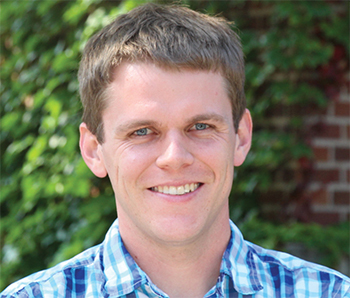
Accomplishing a dream can stop you in your tracks, which is where Krumm found himself when he learned his startup, Sironix Renewables, had received its first bit of funding. Years of coursework and research had led him to this standstill, but only for a moment. He hopes to grow the small company, which develops new environmentally friendly and safe chemicals from plants for industrial and consumer products.
He first became interested in chemical and energy alternatives while participating in a race car engineering program as an undergraduate. Designing the fuel system sparked his interest in alternative fuels, and during graduate school, he focused on catalytic reaction engineering for renewable fuel and chemical technologies.
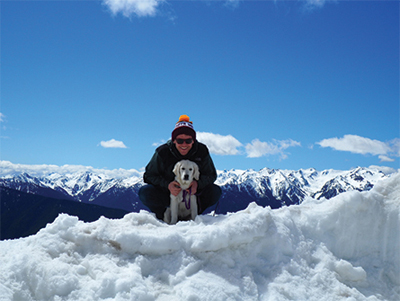
Running a startup has given Krumm the freedom to define his own problems and come up with his own solutions. He explains, “Seeing all of the smaller tasks and projects come together into a company vision is hugely inspiring.”
FUN FACT >> Krumm would like to eat Cheez-Its for every meal.

Lucas Landherr, PhD, 34
Associate Teaching Professor
Northeastern University
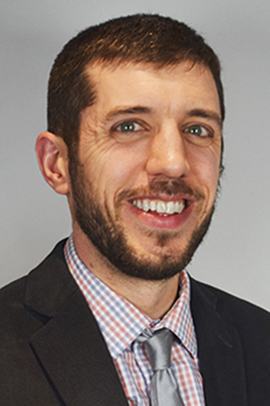
Open a chemical engineering textbook and the only visuals you’re likely to find are graphs, charts, and diagrams. Landherr, an assistant teaching professor in the Chemical Engineering Dept. at Northeastern Univ., is working to change that and make chemical engineering more accessible to all. He conducts engineering education research into the use of comics as teaching tools and for the development of K–12 modules.
He has found that the comics he develops help students grasp complex ideas — even the notoriously confusing concept of fugacity. He explains, “I collaborated with a professional artist to create a 10-page comic to explain fugacity. The comic describes the thermodynamic basis for fugacity, key relevant equations, how it can be applied, and its larger purposes in phase and chemical equilibrium.” Landherr offered the comic for free online and it’s now being used at universities throughout the U.S., as well as in the U.K., Belgium, and Denmark.
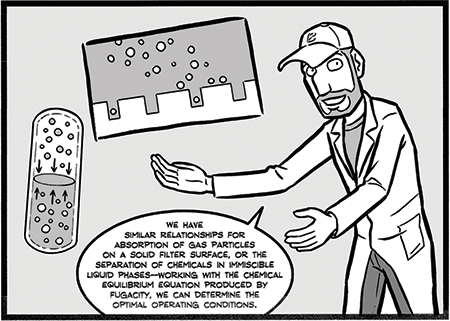
It was as an undergrad that Landherr realized his passion for teaching and decided it was the best way for him to contribute to the field. He admits that teaching a topic with applications as diverse as chemical engineering can be a challenge. However, he’s found the best approach is to teach students to simply be effective problem-solvers, enabling them to tackle any problem, no matter the specialty they pursue. He says, “Working with students on a daily basis — educating them, advising them, interacting with them — is a source of pure joy for me.”
FUN FACT >> Landherr has made a daily photocomic for more than nine years under the pseudonym Dante Shepherd.

Nastassja Lewinski, PhD, 33
Assistant Professor
Virginia Commonwealth University
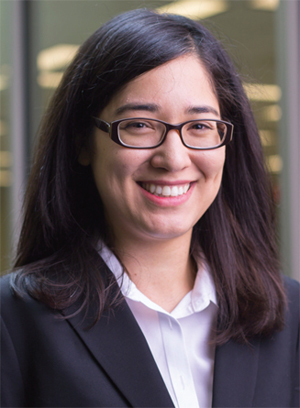
Lewinski is an assistant professor of chemical and life science engineering at Virginia Commonwealth Univ. Her research group focuses on bridging the gap between the rapidly increasing number of complex nanostructures and our understanding of the toxicity and biodistribution of these nanostructures by developing new techniques to detect, measure, control, and predict their pharmacokinetics. Advancing her research program while motivating and supporting students in the classroom and in the lab is a balancing act. However, she thinks the opportunity to mentor her students and watch them grow is worth the effort.
This isn’t the first challenge Lewinski has faced. She conducted her postdoctoral fellowship in Lausanne, Switzerland, where she collaborated with fellow researchers, some of whom did not speak English. She turned this obstacle into a learning experience — finding out how people outside the U.S. conduct research and how to work in a non-English-speaking environment professionally.
FUN FACT >> Lewinski recommends the book The Autobiography of Benjamin Franklin.

Meagan Lewis, 31
Senior Product Line Manager
Honeywell UOP
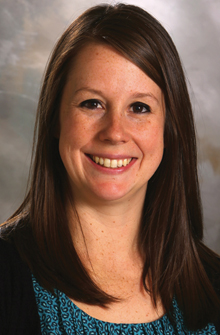
Lewis knew from the beginning of her studies in chemical engineering that she would never have a purely technical role. Starting her career in field services, she earned her MBA and is now lending her technical skills to the business and marketing side at Honeywell UOP. She manages the product portfolio for light olefins petrochemical catalyst, and partners with international teams to identify opportunities, generate business cases for markets, and implement market plans worldwide.
Working internationally and in cross-functional teams can be tedious for some, but Lewis likes that it helps her to get to know her colleagues and exposes her to a range of perspectives. She explains that marketing products to appeal to international markets is challenging, but has given her the opportunity to learn about the values of different business cultures.
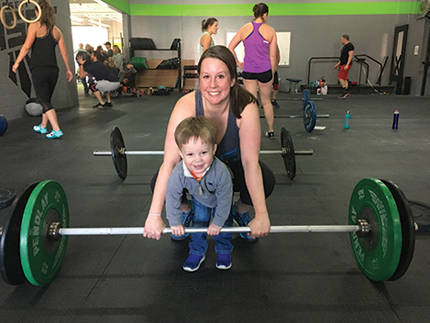
In both her career and personal life, Lewis aims to lead by example. As a working mom who also serves on AIChE’s Board of Directors, she hopes to show other women and her own children that you can find time for work, a personal life, and to volunteer.
FUN FACT >> Lewis says “Rabbit, Rabbit” on the first of every month.

William Liechty, PhD, 33
Associate Research Scientist
Dow Chemical Co.
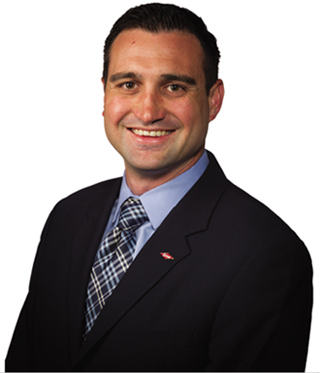
Working on research projects during his undergraduate career put Liechty on the front line of innovation, and he hasn’t left. Now, as an associate research scientist in the food, pharmaceutical, and medical business at Dow, he is focusing on commercializing cellulose-based polymers with novel size and shape combinations and ensuring a robust supply of innovation projects.
We wouldn’t all describe our jobs as fun, but that’s exactly how Liechty describes conducting research and seeing his innovations go to market. He explains, “It is immensely satisfying and rewarding to help something go from the lab to a viable commercial technology.” Of course, his work isn’t all just fun. His ultimate focus is the customer, and he strives to help people accomplish things “safer, better, faster, cheaper, or even totally differently than they could have imagined.”
Research and innovation requires curiosity and a love of learning, and Liechty credits teachers for instilling this in him. He admires educators of all types, from his mother, a veteran elementary teacher, to the professors he conducted research with. He describes a love of learning as “the greatest gift that one can receive.”
FUN FACT >> Liechty’s ideal snack is Goldfish and unsalted almonds in a 3:1 volume ratio.

Ali Mesbah, PhD, 34
Assistant Professor
University of California, Berkeley
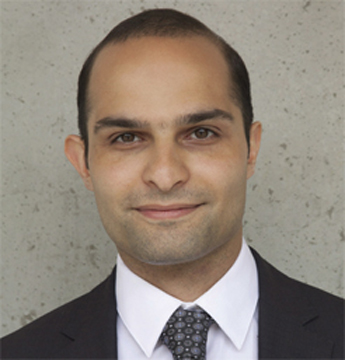
Mesbah wants to make his mark on society through his research. An assistant professor of chemical and biomolecular engineering at the Univ. of California, Berkeley, he develops advanced computational tools for systems analysis and advanced control of novel chemical and biomolecular engineering applications.
Beyond his research, Mesbah enjoys working with his students, saying, “I find the scientific discussions and interactions with my students one of the most enjoyable and rewarding aspects of my job.” However, he finds that describing advanced mathematical concepts to newcomers can be a challenge.
FUN FACT >> The first concert Mesbah attended was Shahram Nazeri, an Iranian classical musician.

Jeffrey R. Millman, PhD, 34
Assistant Professor
Washington University
School of Medicine in St. Louis
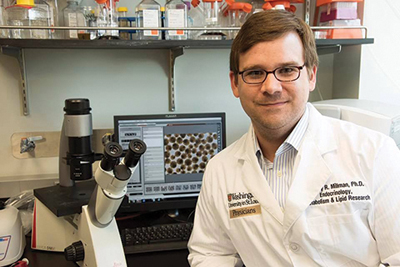
An assistant professor of medicine and biomedical engineering at Washington Univ. School of Medicine in St. Louis, Millman is “genuinely excited to wake up and go to work every morning.” He credits this verve to his students and trainees who “show me something new — important scientific observations that I, and likely no one else, have ever seen before.”
Millman’s research lab uses stem cells in diabetes and regenerative medicine research. He is proud of the work he and his research team are doing in generating insulin-producing tissues in bioreactors, saying, “transplantation of these engineered tissues will one day replace the need for insulin injections in diabetes patients.” Millman has embraced the apprehension that comes with trying something new, like cutting-edge research, advising others to do the same and “move forward, confident that your failures will lead to growth and success.”
FUN FACT >> Millman is active on Twitter at @ JeffreyRMillman.

Francesca Mirri, PhD, 29
Research Scientist
Rice University
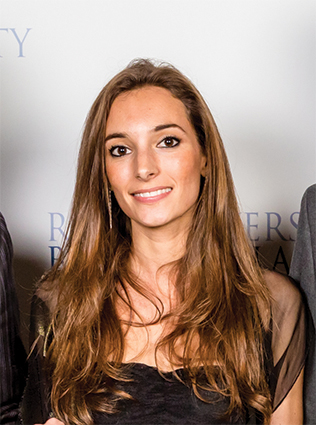
Mirri was awarded both the best engineering thesis award and the best invention award in 2016 from Rice Univ. for her work on carbon nanotube solutions for lightweight, electrically conductive materials. “I was able to turn an original idea into an innovative product,” she says. She remains at Rice as a research scientist, focusing on carbon nanotube synthesis and characterization of carbon nanotubes in solution using X-ray and neutron-scattering techniques. She is also involved in the development of lithium-ion batteries made of carbon nanotubes for wearable electronics applications.
Mirri explains that working in uncharted territory comes with its challenges. “Research does not always turn out the way you expect it to. Understanding what might be wrong with your experiments and trying to find alternative ways to interpret your results is the most challenging and, at the same time, the most fun part of my job,” she says. Mirri advises others to get out of their comfort zones because in her experience, “those scary decisions turned out to be the most important ones I made.”
FUN FACT >> One of Mirri’s most-used apps is NYT Cooking.

Ruth Misener, PhD, 32
Lecturer and Royal Academy of Engineering
Research Fellow
Imperial College London
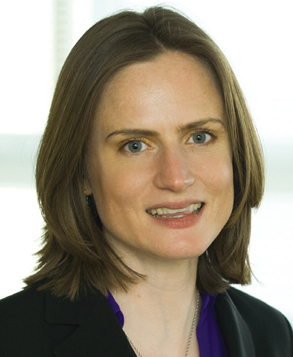
As a lecturer and researcher in the Dept. of Computing at Imperial College London, Misener leads an interdisciplinary team of process systems engineers, computer scientists, and mathematicians. Her research group develops numerical optimization algorithms and computational software for bioprocess optimization under uncertainty and petrochemical process design and operation. She plans to continue in this realm, and aims to “develop industrially relevant decision-making methodologies for optimizing chemical and biological processes.”
Her success as an innovator has not happened in a vacuum. She explains, “Working with creative, energetic researchers makes my job new and exciting every day. They’re always innovating and pushing boundaries.” A desire to participate in a strong and supportive community is a common thread through Misener’s narrative. A program pairing undergrads with experienced researchers originally drew her to process systems engineering (PSE), and it is the community that has helped motivate her to stay. The death of her mentor revealed the PSE community to Misener as a well of love and respect. She states that her mentor “still lives through the support and mentorship of my colleagues.”
FUN FACT >> Misener likes to snack on cheese while writing grants.

Holly Murphy, 33
Confections Performance Analyst
Mondelez International, Inc.
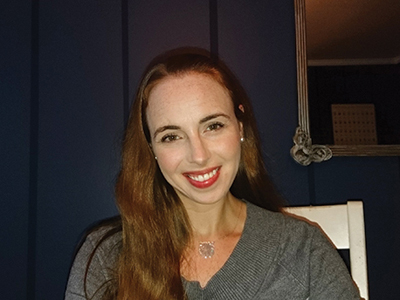
Murphy is a confections performance analyst at Mondelez — a company that produces some familiar snack foods. She was drawn to chemical engineering because of the various professional pathways it offers, which she’s taken advantage of, choosing food and beverage over more-traditional paths.
She is proud of the time she has spent in manufacturing, explaining, “Manufacturing can be an extremely challenging environment that I am proud to say I survived!” Working with her colleagues and taking advantage of the various skills they bring to a project is part of what Murphy enjoys most about her role.
FUN FACT >> Murphy organizes her apps by color.

Akash Narani, 30
Senior Process Engineer
Lawrence Berkeley National Laboratory
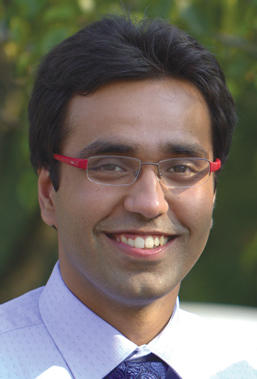
It’s not every day that chemical engineers make the front page. Narani and his colleagues, however, made a splash in the Havre Daily News (the newspaper of the town where he had his first job) for developing a novel process to convert plant-based oils into jet fuel and other valuable chemicals.
This early recognition helped launch Narani’s career, and now he is a senior process engineer in the advanced biofuels and bioproducts process demonstration unit (ABPDU) at Lawrence Berkeley National Lab. He enjoys working with diverse clients, and helping them to “scale up and optimize their early-stage advanced biofuels, biomaterials and biochemicals, and process technologies from lab to commercial relevance.” His goal is to realize the untapped potential of alternative fuels, such as biodiesel and bioethanol, to improve environmental sustainability and human health.
FUN FACT >> The first concert Narani attended was Linkin Park.

Bihter Padak, PhD, 33
Assistant Professor
University of South Carolina (USC)
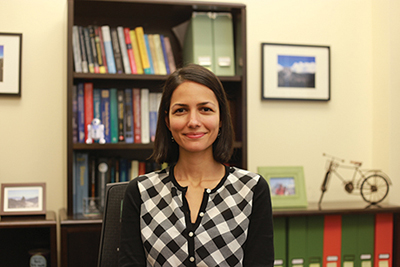
Through her research, Padak is working to curb the environmental impact of generating electricity from fossil fuels, focusing on emissions of carbon dioxide, nitrogen oxides, sulfur oxides, and trace metals. She sees her research group’s work applying to oxy-combustion of coal, chemical looping combustion, and high-hydrogen-content fuel combustion in gas turbines.
Padak didn’t just stumble into her career. Becoming a professor has been a lifelong dream of hers, and her interest in chemistry was sparked in high school. A chemical reaction engineering course during her undergrad studies set her on the path to combustion kinetics. Now that she has achieved much, she has set a new goal for herself: “to be recognized both nationally and internationally with my contributions to the field.”
FUN FACT >> If Padak wasn’t a ChE, she would be a park ranger at Yosemite National Park.

Ankur Pariyani, PhD, 32
Cofounder and Chief Innovation Officer
Near-Miss Management
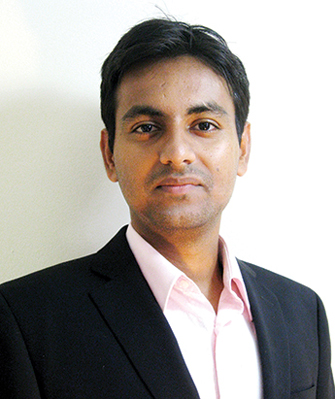
Pariyani is the cofounder and chief innovation officer of Near-Miss Management (NMM), which develops software that detects risks early to prevent catastrophic events. He explains that part of the challenge of developing such a software is introducing capabilities to the product without sacrificing the simplicity of the design, but he revels in the opportunity to solve tough engineering problems using technology.
Pariyani freely shares his knowledge of risk reduction as a senior member of AIChE, presenting at more than ten AIChE conferences and contributing to the AIChE Journal and CEP.
Through his work and contributions, he is well on his way to achieving his goal “to make the process industry a safer place through technological innovation.”
FUN FACT >> Pariyani’s go-to app is Slack.

Camille Petit, PhD, 32
Senior Lecturer
Imperial College London
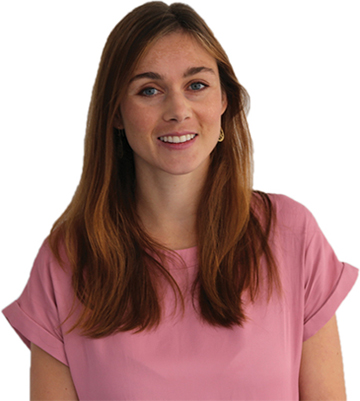
Petit, a senior lecturer at Imperial College London, found her career path by “a mix of chance and choice.” She earned her BSc in chemistry and physics, and always planned to work in sustainability. Her interest in research started during a graduate project in materials development and environmental remediation. She has continued on that path, and now leads a research group developing multifunctional materials for energy and environmental applications.
Handling teaching, research, and administrative work at the same time can be a challenge for Petit, but it is also what keeps her engaged and excited. Research gives Petit the opportunity to work with talented researchers, and she makes it her mission to ensure those in her group “get the successful careers they deserve.”
FUN FACT >> The first concert Petit attended was the Red Hot Chili Peppers.

Nemoy Rau, 33
Cofounder and Vice President
US Biometrix
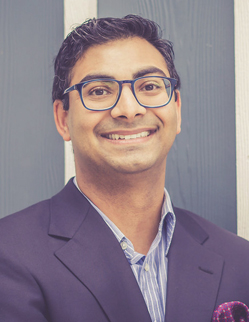
An avid water lover, Rau sees a parallel between competitive water sports, like sailing, and business. “Similar to business, winning a competitive fleet race is often not about doing things right, but rather about making as few mistakes as possible. … You strive to be consistent and learn from your mistakes,” he explains.
Rau has applied this thinking to find success in his entrepreneurial pursuits. His latest is US Biometrix — a brain sciences company that uses big data analytics to create an objective platform to measure cognition, behavior, and functional effectiveness for behavioral healthcare.
While his formal education is in chemical engineering, teachers and mentors have helped fortify his business and finance knowledge. He admits, “Putting together unique business models for new industries to push the envelope is extremely difficult.” He cites industry experts and the right team as the necessities for navigating these difficult tasks.

Rau’s past is informing his next endeavor. He was exposed to the decline of heavy industry growing up in the Rust Belt, but in this, he sees an opportunity. Next, he is looking to invest in companies pursuing high-tech manufacturing and applying analytics to the heavy industrial sector.
FUN FACT >> The apps Rau uses most are Twitter and Accompany.

Sheena M. Reeves, PhD, 33
Assistant Professor
Prairie View A&M University
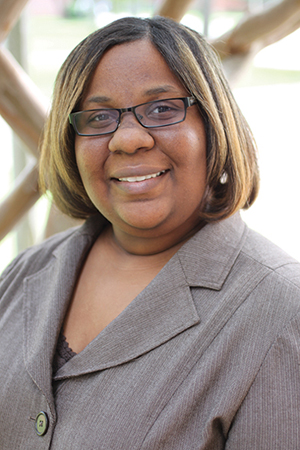
While her friends graduated and started families, Reeves made the tough decision to further her education — a decision she’s glad she made. As a 2016 nominee for teacher of the year in the Roy G. Perry College of Engineering at Prairie View A&M Univ., it would seem her students are happy, too.
Reeves is an assistant professor in Prairie View’s Chemical Engineering Dept., where she enjoys working with a diverse student body. A self-described naturally compassionate person, she wants to see all of her students succeed, but understands that it isn’t always possible. “Watching personal struggles destroy great students is never easy,” she says. She can relate to her students who struggle with feedback and criticism, and she advises them to appreciate the experience as a “time for growth and learning, not reducing self-esteem.”
Reeves is looking to ensure a consistent crop of chemical engineering students for her to teach and inspire. A Society of Women Engineers (SWE) camp for high-school students motived her to become a chemical engineer, and now she wants to reach out through similar K–12 initiatives.
FUN FACT >> Reeves never turns her living room TV off, but instead sets a timer.

Rebekah Scheuerle, PhD, 26
Board Member
JustMilk
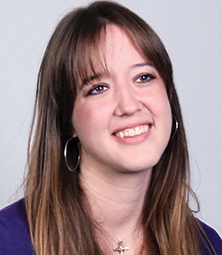
Many infant deaths in low-resource areas could be prevented through proper administration of medicine and nutrients. At JustMilk, Scheuerle is working to characterize and develop devices that account for lack of refrigeration, literacy, and potable water to save the lives of breastfeeding infants.
Her interest in pharmaceuticals, vaccines, and devices, as well as a passion for increasing access to medicines globally, solidified into her current pursuit. Her research and work with JustMilk has garnered recognition from AIChE, The Bill and Melinda Gates Foundation, IBM, and many others. She successfully copitched the JustMilk project to win Pitch@Palace 5.0, a U.K. start-up competition.
Although she has extensive laboratory experience, Scheuerle also steps outside of the lab to investigate practices for delivering drugs to infants in Limpopo, South Africa. She says, “I enjoy communicating with potential end-users of the devices JustMilk is developing, and appreciate being able to bring their perspectives to the public.”
FUN FACT >> Scheuerle’s favorite book is 1984.

Dawud H. Tan, PhD, 33
Research Specialist
3M
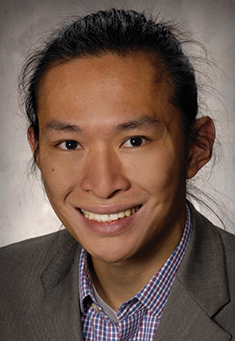
Managing family and professional life is a challenge — particularly for Tan, who had to decide between going back to Indonesia to be closer to his family after earning his undergraduate degree in the U.S., or staying and pursuing his doctoral degree. A research specialist at 3M, Tan is happy he chose to stay in the U.S. to further his education, saying, “There is always a happy medium.” Living in the U.S. came with language challenges, which Tan overcame by “forcing myself to not be shy and interact with other English-speaking people around me” — growth and development he reflects on with pride.
Dealing with tough personal challenges has made Tan resilient, and he says he is not afraid to “fail fast, and fail often.” This willingness to push boundaries has helped him to earn praise at 3M, where he is involved in R&D in the areas of melt blowing and nonwoven materials. At 3M, he invented a new process technology related to blown microfibers (BMF) that has been scaled into worker safety products and systems.
FUN FACT >> Tan frequently cracks his fingers, toes, neck, and back.

Ashlee Ford Versypt, PhD, 33
Assistant Professor
Oklahoma State University
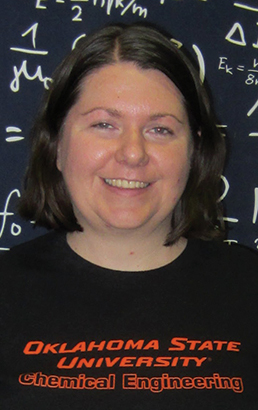
Ford Versypt has been teaching since she was an undergraduate, through tutoring, informal teaching, and outreach. A course called College Teaching and Academic Careers during graduate school was a significant influence on her, and now she is an assistant professor of chemical engineering at Oklahoma State Univ.
She directs the Systems Biomedicine and Pharmaceutics Research Laboratory, which focuses on the intersection of chemical engineering, computational science and engineering, applied mathematics, biomedical science, and pharmaceutical science. She manages the demands of research with teaching, saying, “I love interacting with students. It is great to see when course concepts and research methods click.” Her goal is to contribute meaningfully to society through her work and interactions with people. A long list of awards and accolades for teaching, mentoring, and research suggests her goal is in sight.
FUN FACT >> The first concert Ford Versypt attended was Sawyer Brown.

Matthew J. Webber, PhD, 33
Assistant Professor
University of Notre Dame
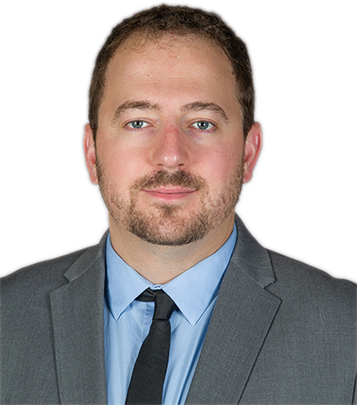
An assistant professor in the Chemical and Biomolecular Engineering Dept. and the Chemistry and Biochemistry Dept. at the Univ. of Notre Dame, Webber is working to advance therapeutic strategies rooted in molecular engineering toward clinical applications that impact human health. “I would love to look back on my career and be able to point to a technology originating from my lab that directly made a meaningful impact on improving healthcare for people,” he says.
Webber enjoys teaching and leading “eager young people who are bright, engaging, creative, and driven” and working with them to think of creative solutions to difficult problems. However, he says “tailoring and individualizing my mentorship and teaching to each person” is a challenge because “everyone has different things that motivate them, different reasons for pursuing education, and different goals.” He continually works to fine-tune his teaching and mentoring approach to access the talents and maximize achievements of each individual.
FUN FACT >> If Webber wasn’t a ChE, he’d be a brewmaster or a pit boss at a smokehouse.

Kendall Werts, 32
Process Risk Engineer
Linde Gas
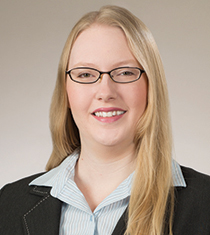
Process safety is “not just a box to check, but a powerful tool that can make operations better and more efficient,” says Werts, a process risk engineer at Linde Gas. Her goal is to transform the reputation of process safety as a source of problems to a solution to problems. She applies this passion for safety to ensure plants are compliant with regulatory and corporate safety and health programs, and when needed, she maintains and improves these programs.
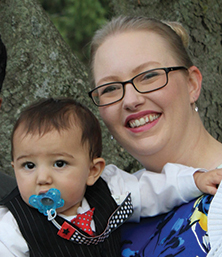
She welcomes the opportunity to solve problems, and with responsibility for plants across North and South America, she is never short on problems to solve. “I like getting that phone call and working with the plant to figure out what the issue is and how to solve it,” she offers. When working with plants, she relies on hard evidence, not word-of-mouth. “It is always better to read and know the source for yourself than to trust what someone else tells you. … Go look up the code, standard, or spec,” she says. An individual thinker, she advises looking beyond how things have been done to avoid getting stuck in a rut, stating, “Make sure you have an educated, fresh perspective.”
FUN FACT >> Werts is a self-described Reddit addict.

Ahmed Youssef, PhD, 33
Lead Scientist
SABIC
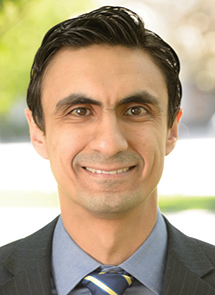
Leading a global and diverse team to execute the technology roadmap for SABIC’s acrylonitrile butadiene styrene (ABS) product line and helping to move research projects for new process technologies from the lab into commercial operation keeps Youssef busy. As lead scientist at SABIC, he continued to fulfill these responsibilities while also earning his MBA from Purdue Univ.’s Krannert School of Management, and now he’s putting his technical background and business know-how to use.
Youssef likes that his job affords him the ability to explore new areas of research through blue-sky projects, while also working to overcome challenges at existing sites. He was involved in leading a global team on a technology licensing and deployment project in the Middle East, where he worked to start up a new $600-million plant.
FUN FACT >> The last thing Youssef bought online was a Nest smart digital thermostat.

Copyright Permissions
Would you like to reuse content from CEP Magazine? It’s easy to request permission to reuse content. Simply click here to connect instantly to licensing services, where you can choose from a list of options regarding how you would like to reuse the desired content and complete the transaction.
